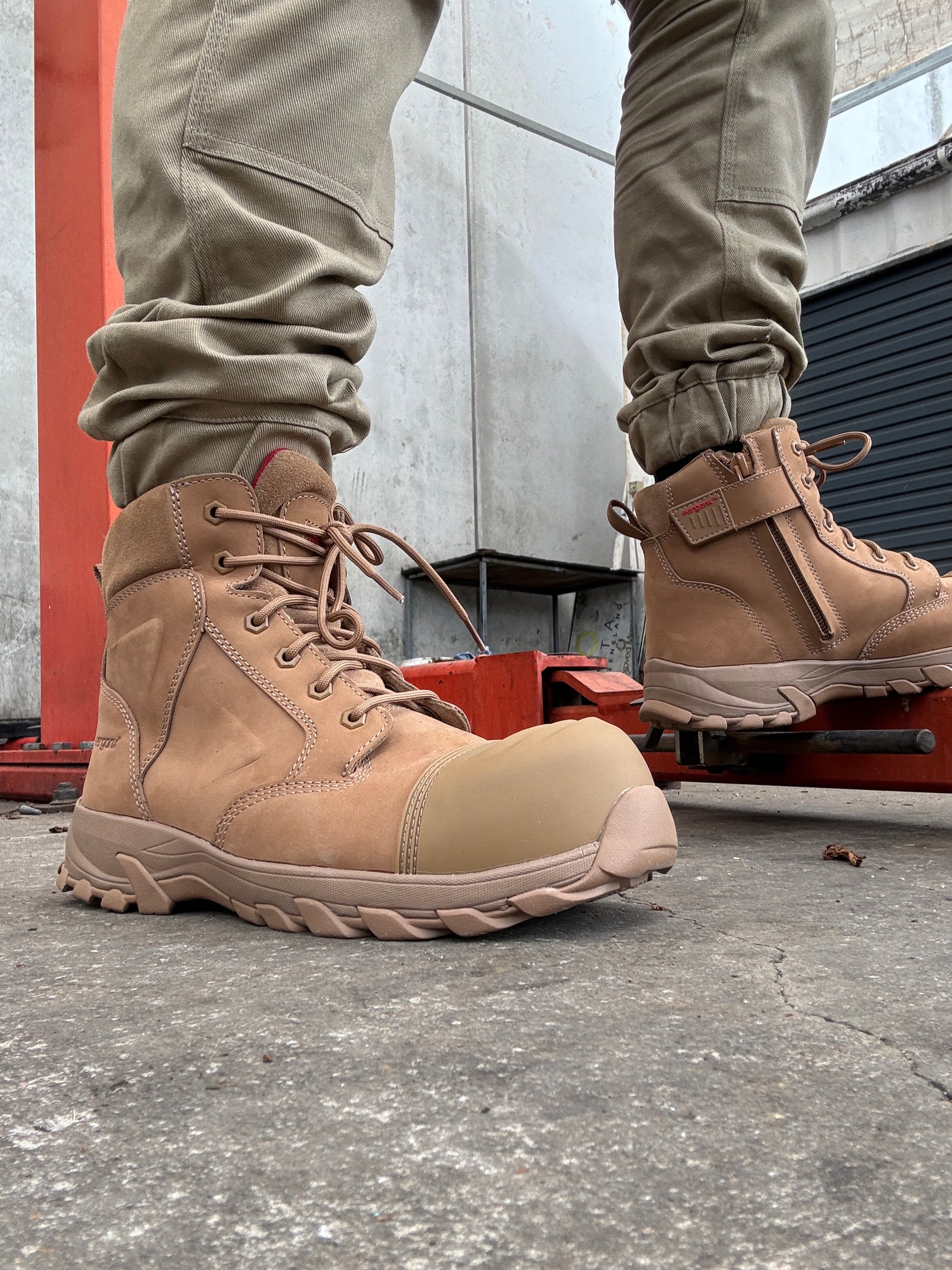Introduction
When it comes to work boots, safety isn't just a feature—it's a necessity. For those pounding the pavement or working on a construction site, having the right pair of boots is crucial. But what makes a work boot compliant with Australian standards? Let's dive into the nitty-gritty of the lining, insole, and insock of work boots and understand why these components are vital for safety and comfort.
What Makes a Work Boot Safe?
Before we delve into the lining, insole, and insock, let's briefly touch upon what makes a work boot safe. Australian standards ensure that work boots provide sufficient protection against workplace hazards. These standards encompass various aspects, from the boot's outer material to its internal components, ensuring durability, protection, and comfort.
Abrasion Resistance
A crucial aspect of safety footwear is abrasion resistance. The lining, insole, and insock must withstand wear and tear to ensure longevity and protection. This resistance not only extends the life of the boot but also maintains its protective qualities over time.
Thickness and Material
The insole, which is the board the upper attaches to, must be at least 2 millimeters thick. This thickness is essential for maintaining the boot's structure and providing a solid foundation. Meanwhile, the insock, or footbed, offers cushioning and comfort, ensuring that your feet are well-supported throughout the day.
pH and Chromium 6 Content
The materials used in the lining, insole, and insock must be tested for pH levels and Chromium 6 content. High levels of Chromium 6 can be harmful to health, so it's vital that the materials are free from this element. The pH level must also be balanced, as an incorrect pH can lead to discomfort or even skin issues.
Lining Insole & Insock: The Unsung Heroes of Work Boots
Lining
The lining of a work boot is more than just a layer between your foot and the outer material. It plays a significant role in moisture management, helping to keep your feet dry and comfortable. A high-quality lining will wick away sweat, reducing the risk of blisters and other foot problems.
Insole
Often misunderstood, the insole is the board to which the upper part of the boot is attached. Its primary function is to provide stability and support. A well-constructed insole ensures that the boot maintains its shape and provides the necessary support for your feet.
Insock
The insock, commonly referred to as the footbed, is where comfort truly shines. This component cushions your feet, absorbing shock and reducing fatigue. For those who spend long hours on their feet, a well-designed insock is a game-changer.
Testing for Compliance
Ensuring that the lining, insole, and insock meet Australian standards involves rigorous testing. Here's what goes into making sure your work boots are up to par:
Abrasion Resistance Testing: This ensures that the materials can withstand the daily wear and tear of a demanding work environment.
Thickness Measurement: The insole's thickness is checked to ensure it meets the minimum requirement of 2 millimeters.
pH and Chromium 6 Testing: These tests confirm that the materials are safe for prolonged contact with your skin, preventing potential health issues.
FAQs
About Lining Insole & Insock in Workboots
- Why is the thickness of the insole important?
- The thickness ensures structural integrity and support, providing a stable base for the foot.
- What is the difference between the insole and the insock?
- The insole is the structural board that the upper attaches to, while the insock is the cushioned footbed providing comfort.
- How does the lining help in moisture management?
- A good lining wicks away moisture, keeping feet dry and reducing the risk of blisters.
- What makes a work boot compliant with Australian standards?
- Compliance involves meeting criteria for abrasion resistance, material thickness, and testing for harmful substances like Chromium 6.
- Can improper pH levels in boot materials affect foot health?
- Yes, an incorrect pH can lead to skin irritation and discomfort.
Conclusion
Choosing the right work boots is more than just about style or brand. It's about ensuring your safety and comfort throughout your workday. By understanding the role of the lining, insole, and insock, you can make an informed decision that aligns with Australian standards. So, next time you're in the market for work boots, remember to check these crucial components. Your feet will thank you!


